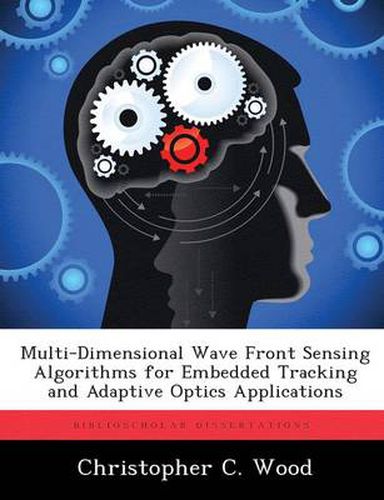Readings Newsletter
Become a Readings Member to make your shopping experience even easier.
Sign in or sign up for free!
You’re not far away from qualifying for FREE standard shipping within Australia
You’ve qualified for FREE standard shipping within Australia
The cart is loading…






This title is printed to order. This book may have been self-published. If so, we cannot guarantee the quality of the content. In the main most books will have gone through the editing process however some may not. We therefore suggest that you be aware of this before ordering this book. If in doubt check either the author or publisher’s details as we are unable to accept any returns unless they are faulty. Please contact us if you have any questions.
Current tracking and adaptive optics techniques cannot compensate for fastmoving extended objects, which is important for ground-based telescopes providing space situational awareness. To fill this need, a vector-projection maximum-likelihood wave-front sensing algorithm development and testing follows for this application. A derivation and simplification of the Cramer-Rao Lower Bound for wave-front sensing using a laser guide star bounds the performance of these systems and guides implementation of a vastly optimized maximum-likelihood search algorithm. A complete analysis of the bias, mean square error, and variance of the algorithm demonstrates exceptional performance of the new sensor. A proof of concept implementation shows feasibility of deployment in modern adaptive optics systems. The vector-projection maximum-likelihood sensor satisfies the need for tracking and wave-front sensing of extended objects using current adaptive optics hardware designs.
$9.00 standard shipping within Australia
FREE standard shipping within Australia for orders over $100.00
Express & International shipping calculated at checkout
Stock availability can be subject to change without notice. We recommend calling the shop or contacting our online team to check availability of low stock items. Please see our Shopping Online page for more details.
This title is printed to order. This book may have been self-published. If so, we cannot guarantee the quality of the content. In the main most books will have gone through the editing process however some may not. We therefore suggest that you be aware of this before ordering this book. If in doubt check either the author or publisher’s details as we are unable to accept any returns unless they are faulty. Please contact us if you have any questions.
Current tracking and adaptive optics techniques cannot compensate for fastmoving extended objects, which is important for ground-based telescopes providing space situational awareness. To fill this need, a vector-projection maximum-likelihood wave-front sensing algorithm development and testing follows for this application. A derivation and simplification of the Cramer-Rao Lower Bound for wave-front sensing using a laser guide star bounds the performance of these systems and guides implementation of a vastly optimized maximum-likelihood search algorithm. A complete analysis of the bias, mean square error, and variance of the algorithm demonstrates exceptional performance of the new sensor. A proof of concept implementation shows feasibility of deployment in modern adaptive optics systems. The vector-projection maximum-likelihood sensor satisfies the need for tracking and wave-front sensing of extended objects using current adaptive optics hardware designs.